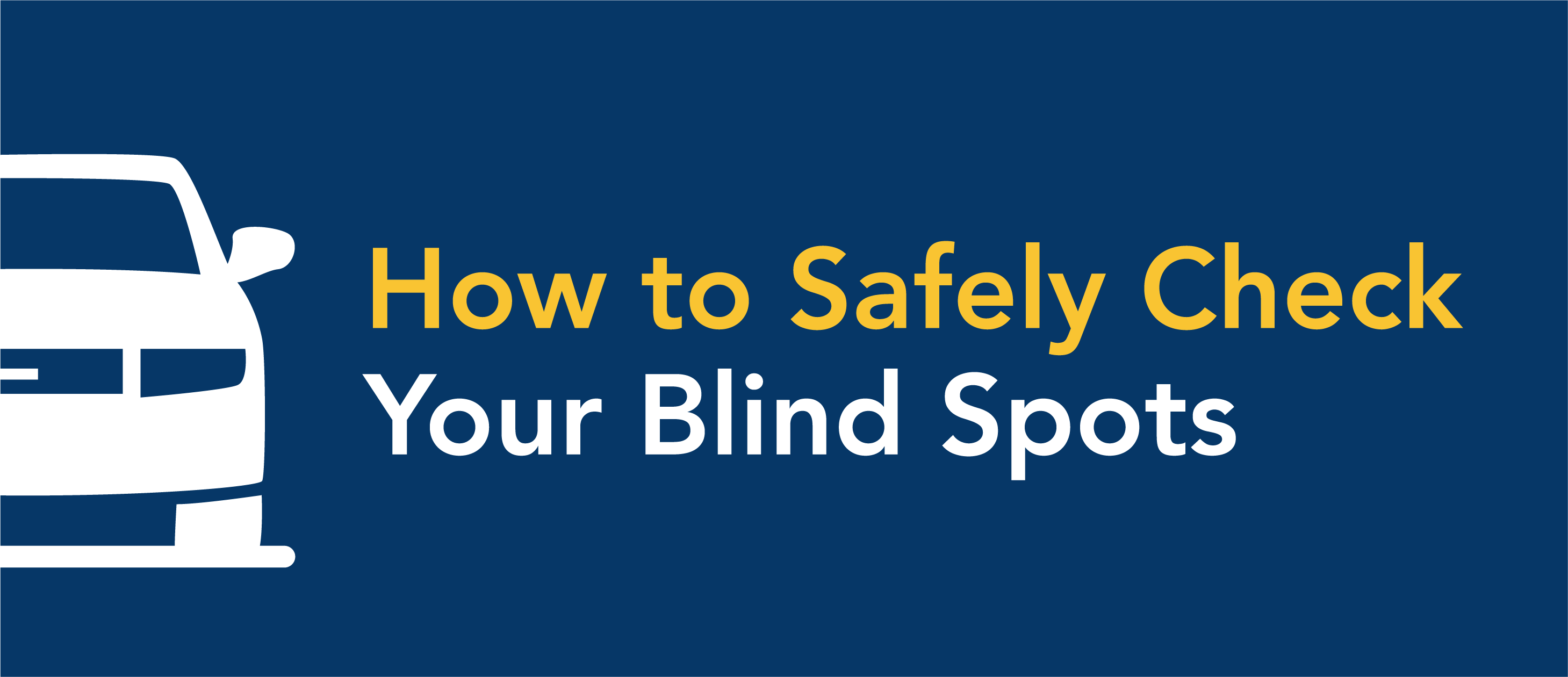How to Safely Check Your Blind Spots

Every driver should know where his or her blind spots are for their vehicle. Do you know where your blind spots are and how to properly check them? Learn how checking blind spots by scanning ahead, communicating intentions and maintaining a cushion of safety can save you a costly trip to an auto body shop.
What are Blind Spots?
Blind spots refer to the area around the vehicle that can’t be seen by the driver by using their
mirrors. These areas exist around other vehicles where your vehicle is not visible to other drivers as well. It is important to understand that all drivers, regardless of the type of vehicle they drive, have blind spots around their vehicle; however, the bigger the vehicle, the bigger the blind spots. The blind spots of a semi-truck are so large and dangerous that they have a special name: NO-ZONES.
The Importance of Scanning, Communication and Cushion of Safety (S.C.C)
Applying S.C.C. during every trip will help you become a proactive driver and enable you to size up any situation — including those spine tingling blind spots as you merge or change lanes.
Scanning: You should know where, when and how to look 360 degrees (blind spots included) around the vehicle for signs, signals, roadway markings and potential hazards.
Make sure to scan ahead 12-15 Seconds in all environments, 1-11⁄2 blocks in city environments and 1⁄4 mile in highway environments. Observe your side and rear areas of the vehicle, checking mirrors every 3-5 seconds as well as checking blind spots.
Communication: Use various methods to notify other drivers of your intentions. Make use of directional signals, hand signals, headlights, horn, brake lights, hazard lights, reverse lights and the position of your vehicle when on the road.
Cushion of Safety: The area around your vehicle should be kept clear of hazards (front, side and rear). For example, the front of the vehicle should always maintain proper following distance of 3-5 seconds. In addition, we can’t control what the vehicles behind us do, but we can check our mirrors and blind spots so that we are aware of their actions. If you find that you are being tailgated, reduce your speed and increase your following distance to try to reduce the chances of abrupt braking. If you are not already in the right lane, you may also change lanes to the right and allow for the tailgater to pass you if legal and safe to do so.
Pre-trip Vehicle Inspection
Your trip begins before you set foot inside your vehicle. Begin every trip by completing a brief vehicle inspection and make adjustments before putting your key in the ignition.
Before entering your vehicle check:
- The surrounding area. You should be confident when you move your vehicle that you are clear of obstructions.
- Tire condition and pressure. You need tires that are in good condition and that provide efficient traction.
- Excessive fluid leaks. Fluid leakage indicates that something is technically wrong with your vehicle and should be identified quickly to prevent more severe damage.
- Damage to windows. Line of sight should always be clear so that you can scan the road.
- Snow covering windows and mirrors. Always clear snow off of windows and mirrors so that you can scan properly and others can see you.
- Windshield wipers. Ensure wipers are working efficiently to clear snow and rain from your windshield providing a clear line of sight.
Always maintain clear visibility when driving and check your blind spots often — especially when merging or changing lanes. To learn more about checking your blind spots and preventing crashes, view our more detailed pre-trip checklist.